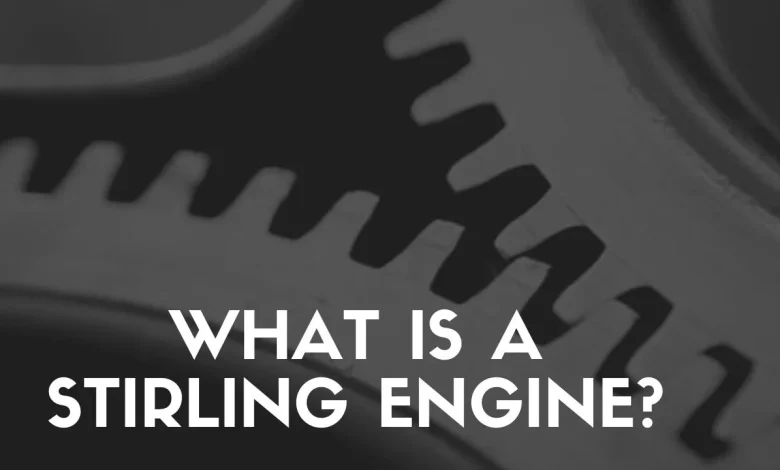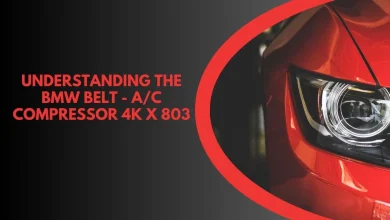What is a Stirling Engine?

A Stirling engine is a type of heat engine that operates by cyclic compression and expansion of air or other gases (the working fluid) at different temperatures, resulting in a conversion of heat energy into mechanical work. Unlike internal combustion engines, Stirling engines use an external heat source, which means they can run on various fuel types, including solar energy, biomass, or even waste heat.
The basic principle involves a gas being heated in one part of the engine, which causes it to expand. As it expands, it pushes a piston, which creates mechanical energy. Afterward, the gas is cooled, contracts, and the cycle starts over. This process is known for being efficient and relatively quiet.
Why is the Glass Important in a Stirling Engine?
The glass in a Stirling engine, particularly in models like the Bisofice Stirling engine, serves a crucial role. It allows observers to see the internal mechanisms of the engine at work, making it a popular choice for educational and demonstration purposes. The transparency of the glass enables users to understand the engine’s operation better.
Additionally, the glass forms a seal that maintains the internal pressure needed for the engine to function effectively. A damaged or broken glass component can lead to pressure loss, rendering the engine inefficient or inoperative. This makes finding the right replacement glass for a Bisofice Stirling engine vital for its continued performance.
What Types of Glass are Used in Stirling Engines?
What are the Characteristics of Borosilicate Glass?
Borosilicate glass is commonly used in Stirling engines due to its excellent thermal resistance and durability. This type of glass is made from silica and boron trioxide, which gives it a low coefficient of thermal expansion.
This means it can withstand rapid temperature changes without cracking or breaking. Borosilicate glass is also resistant to chemical corrosion, making it ideal for engines that might be exposed to various gases or fuels. For a Bisofice Stirling engine, using borosilicate glass as a replacement ensures that the engine remains functional and safe to operate, even under high-temperature conditions.
Can Tempered Glass be Used as a Replacement?
Tempered glass is another option for Stirling engine replacements. It is known for its strength and safety features. Tempered glass is created by heating regular glass to a high temperature and then cooling it rapidly, which increases its strength. If broken, it shatters into small, less dangerous pieces compared to standard glass.
However, tempered glass may not withstand the same temperature extremes as borosilicate glass, making it a less suitable option for high-performance Stirling engines. For a Bisofice Stirling engine, while tempered glass could work in some situations, borosilicate glass is generally preferred.
How to Replace the Glass in a Bisofice Stirling Engine?
What Tools Are Needed?
Replacing the glass in a Bisofice Stirling engine requires some basic tools and a careful approach. You’ll need a screwdriver to remove any screws holding the glass in place, a pair of gloves to protect your hands from sharp edges, and possibly some sealing material like gasket or high-temperature silicone to ensure an airtight fit.
It’s also advisable to have a clean, dust-free workspace to prevent any debris from getting into the engine during the replacement process. Before starting, make sure you have the correct replacement glass that matches the specifications of the original.
What Are the Steps to Replace the Glass?
- Disassemble the Engine: Carefully remove the screws or clips that hold the existing glass in place. This may involve disassembling other parts of the engine to access the glass.
- Remove the Damaged Glass: Once the engine is disassembled, gently remove the damaged or broken glass. Be cautious to avoid any glass shards that could cause injury.
- Prepare the New Glass: Clean the new replacement glass to remove any dust or fingerprints. If needed, apply a thin layer of high-temperature silicone around the edges to create a good seal.
- Install the New Glass: Place the new glass into the engine, ensuring it fits snugly and securely. Reassemble any parts of the engine that were removed during the disassembly process.
- Test the Engine: After replacing the glass and reassembling the engine, conduct a test run to ensure everything is functioning correctly and there are no leaks.
Why is it Important to Use the Correct Replacement Glass?
What are the Risks of Using Incorrect Glass?
Using the wrong type of glass in a Stirling engine can lead to various issues. If the glass cannot withstand the engine’s operating temperatures, it may crack or shatter, leading to a sudden loss of pressure and potential damage to other engine components.
In some cases, using an incorrect replacement glass can also pose safety risks, especially if the engine operates under high pressure. The incorrect glass may also result in poor engine performance, reducing its efficiency and power output. For these reasons, it’s essential to use the correct replacement glass for a Bisofice Stirling engine.
How Does the Right Glass Improve Performance?
The correct replacement glass ensures that the Stirling engine operates at its optimal efficiency. Proper glass maintains the necessary internal pressure and temperature, allowing the engine to convert heat into mechanical energy effectively. This not only improves the engine’s performance but also extends its lifespan by reducing wear and tear on other components.
For the Bisofice Stirling engine, using high-quality replacement glass, such as borosilicate, enhances its durability and reliability, ensuring that it continues to function smoothly for educational demonstrations or other applications.
Where Can You Find Replacement Glass for a Bisofice Stirling Engine?
What Are the Best Places to Buy Replacement Glass?
Replacement glass for a Bisofice Stirling engine can be found in various places, including specialized online stores, hobby shops, and educational supply companies. Websites that specialize in Stirling engines or scientific equipment are often the best sources, as they offer products specifically designed for these engines.
Additionally, some manufacturers of Stirling engines may offer replacement parts directly, ensuring compatibility and quality. When purchasing replacement glass, it’s important to check the specifications to ensure it matches the original part.
What Should You Consider When Buying Replacement Glass?
When purchasing replacement glass for a Bisofice Stirling engine, consider the following factors:
- Material: Ensure the glass is made from high-temperature-resistant material like borosilicate.
- Size and Fit: The glass should match the dimensions of the original to ensure a proper fit.
- Supplier Reputation: Buy from reputable suppliers to guarantee the quality of the product.
- Price: Compare prices from different sources, but don’t compromise on quality for cost.
By taking these factors into account, you can find the right replacement glass to keep your Bisofice Stirling engine running efficiently.
What are the Benefits of Replacing the Glass in a Stirling Engine?
How Does Replacement Improve Engine Longevity?
Replacing the glass in a Stirling engine, especially when it shows signs of wear or damage, can significantly extend the engine’s lifespan. A new glass component ensures that the engine maintains the necessary pressure and temperature levels, reducing the strain on other parts.
This prevents potential breakdowns and keeps the engine running smoothly for longer periods. For the Bisofice Stirling engine, timely replacement of the glass can prevent costly repairs or the need for a complete engine replacement, making it a cost-effective maintenance practice.
What are the Benefits of Keeping the Engine in Good Condition?
Maintaining the Stirling engine in good condition, including regular replacement of components like the glass, offers several benefits:
- Efficiency: A well-maintained engine operates at peak efficiency, converting more heat into mechanical energy.
- Safety: Ensuring that all parts are in good condition reduces the risk of accidents or malfunctions.
- Educational Value: For educational models like the Bisofice Stirling engine, a well-maintained engine provides clear demonstrations of the engine’s principles.
- Cost Savings: Regular maintenance, including glass replacement, can prevent more costly repairs in the future.
These benefits highlight the importance of regular maintenance and using quality replacement parts to keep the Stirling engine functioning effectively.
Pros and Cons of Using Borosilicate Glass for Replacement
| Pros | Cons |
|---|---|
| High thermal resistance | Higher cost compared to standard glass |
| Durable and long-lasting | Limited availability in some regions |
| Chemical corrosion resistant | May require professional installation |
| Clear visibility for demonstration | Fragile if mishandled |
How to Maintain a Stirling Engine After Replacing the Glass?
What Regular Maintenance is Needed?
Regular maintenance of a Stirling engine, especially after replacing the glass, involves routine checks to ensure all components are functioning correctly. This includes inspecting the engine for any signs of wear or damage, checking for leaks around the glass seal, and ensuring that all moving parts are properly lubricated.
Regular cleaning of the engine, particularly the glass, helps maintain visibility and prevents the buildup of dirt or debris that could affect performance. For a Bisofice Stirling engine, following a maintenance schedule ensures long-term reliability and efficient operation.
How Can You Extend the Lifespan of the Glass?
To extend the lifespan of the replacement glass in a Stirling engine, handle the engine with care, especially during transport or demonstrations. Avoid exposing the glass to sudden temperature changes, which could cause it to crack.
Regularly check the seal around the glass to ensure it remains airtight and replace any worn gaskets or sealing materials as needed. Keeping the glass clean and free from scratches will also help maintain its structural integrity and clarity, ensuring that the engine continues to function properly.
Conclusion
Replacing the glass in a Bisofice Stirling engine is an essential maintenance task that can significantly enhance the engine’s performance and longevity. By choosing the right type of glass, such as borosilicate, and following proper replacement procedures, you ensure that the engine operates efficiently and safely. Regular maintenance, including careful handling and routine inspections, further extends the lifespan of the glass and the engine as a whole.
Whether for educational purposes or personal projects, keeping your Stirling engine in optimal condition allows it to continue demonstrating the fascinating principles of heat and energy conversion for years to come. Investing in quality replacement parts, like the appropriate glass, is key to preserving the functionality and educational value of your Bisofice Stirling engine.




